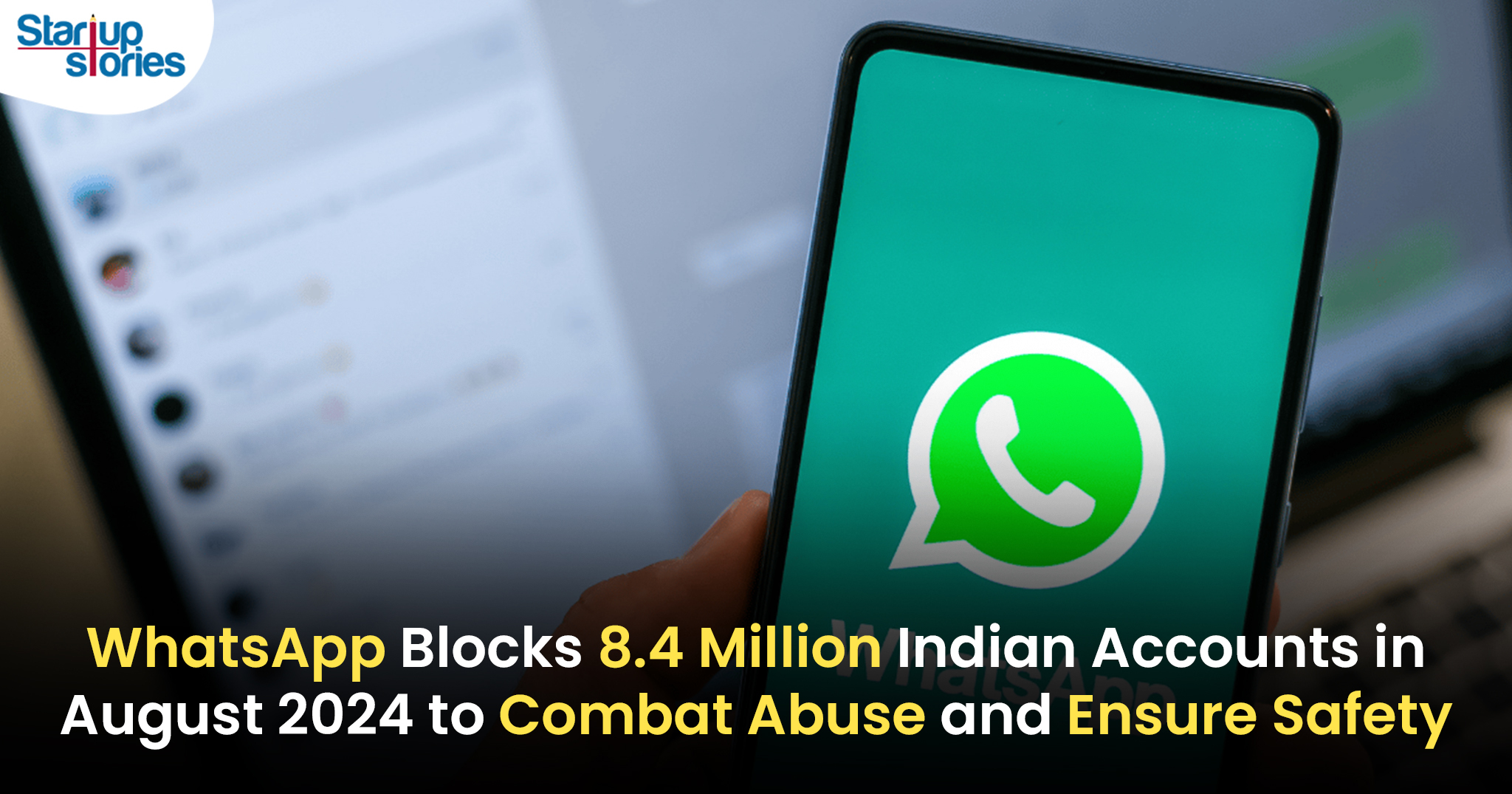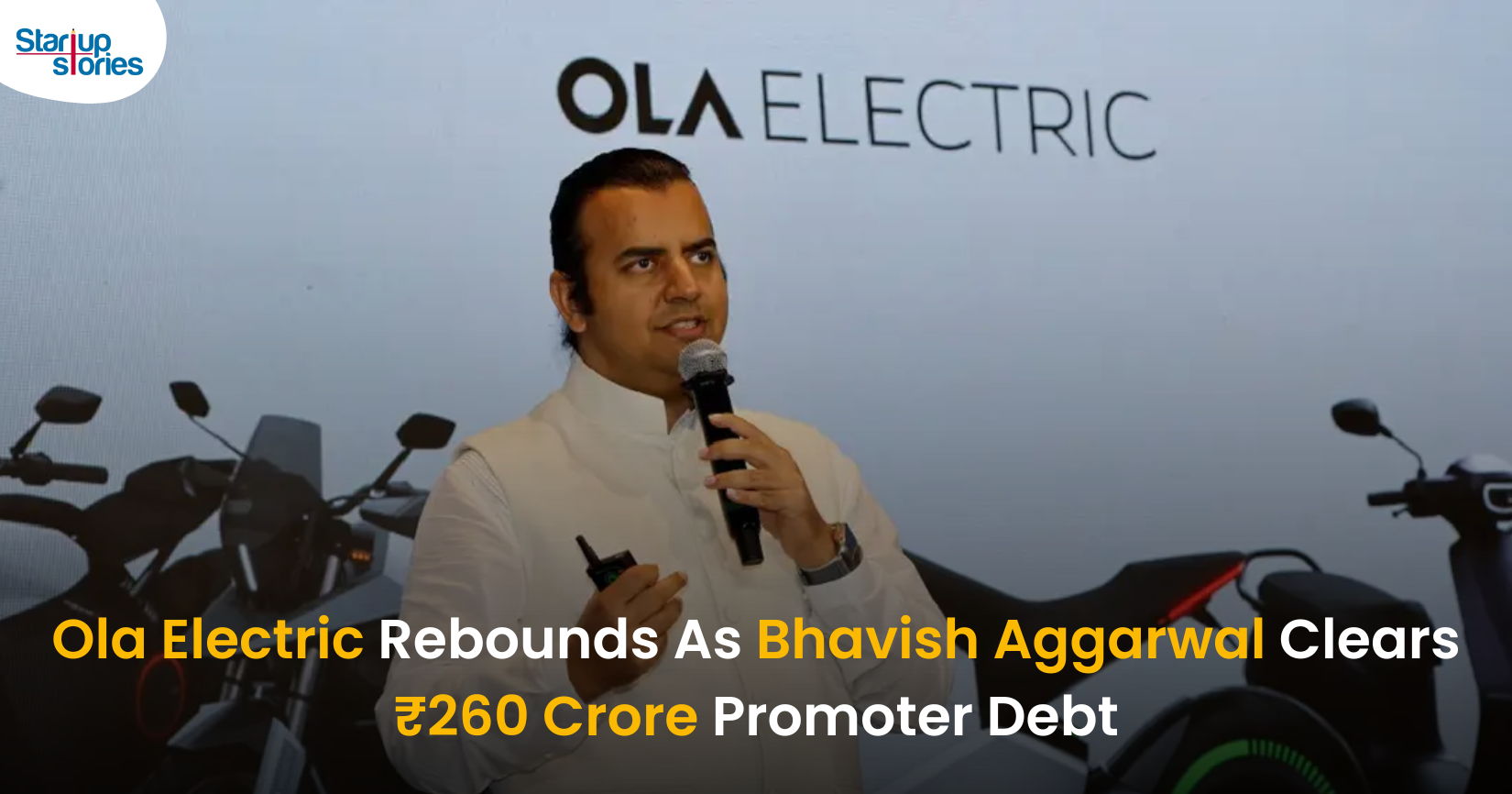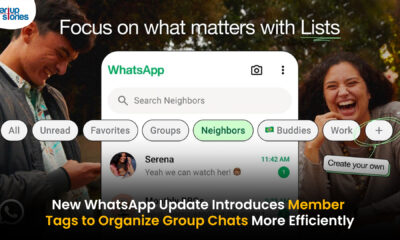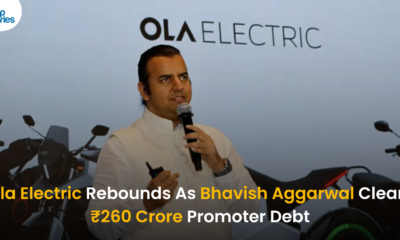Latest News
WhatsApp Bans 8.4 Million Indian Accounts in August 2024 to Curb Misuse!

In a significant crackdown on abuse, Meta-owned WhatsApp banned over 8.4 million accounts in India during August 2024. This move reflects the platform’s ongoing efforts to maintain safety, enforce privacy policies, and prevent misuse. The ban numbers were disclosed in WhatsApp’s latest transparency report, which aligns with the requirements of the Information Technology (Intermediary Guidelines and Digital Media Ethics Code) Rules, 2021.
Proactive Detection at the Core
The report reveals that of the 8,458,000 accounts blocked in August, 1,661,000 accounts were proactively banned before receiving any user complaints. WhatsApp’s automated detection systems play a critical role in identifying suspicious activities, such as bulk messaging—a common tactic used in scams and spamming. The platform leverages advanced algorithms to monitor behavior patterns throughout the lifecycle of an account, from registration to ongoing activity.
User Complaints and Grievance Mechanism
During the same month, WhatsApp’s grievance mechanisms received 10,707 complaints through email and postal channels directed to the India Grievance Officer. These complaints included issues such as ban appeals, account support requests, safety concerns, and other matters related to user experience. Out of these, 93 cases resulted in direct action from WhatsApp.
Reasons for Account Bans
Accounts are typically banned for various violations, including:
- Spamming and bulk messaging
- Engaging in illegal activities as per Indian law
- Harassing or abusive behavior reported by other users
Depending on the nature and severity of the violation, WhatsApp takes different actions, ranging from temporary suspensions to permanent bans.
How WhatsApp Detects Misuse
The platform’s abuse detection system operates at three key points:
- During registration: Monitoring new accounts for unusual patterns.
- Throughout user activity: Tracking messaging behavior and interactions.
- Based on user feedback: Reviewing complaints and appeals for violations.
This robust system helps WhatsApp act swiftly against inappropriate activity, ensuring that the platform remains secure and enjoyable for its users.
A Growing Need for Digital Security
The enforcement measures come at a time when India’s digital ecosystem is expanding rapidly, increasing the need for stringent measures to tackle misuse. WhatsApp’s proactive efforts to ban suspicious accounts underscore its commitment to user safety and responsible platform governance.
Industry Context
As digital communication grows in India, platforms like WhatsApp face increasing scrutiny regarding their content moderation practices. The rise in user complaints highlights the challenges of maintaining a safe online environment amidst widespread usage.
Conclusion
WhatsApp’s decision to ban over 8.4 million accounts in August 2024 illustrates its commitment to combating misuse while adhering to regulatory requirements. By employing advanced detection systems and responding effectively to user complaints, WhatsApp aims to create a safer environment for its users in India.
As the digital landscape continues to evolve, WhatsApp’s ongoing efforts will be crucial in addressing emerging challenges related to online safety and privacy. This proactive approach not only enhances user trust but also reinforces WhatsApp’s position as a leading messaging platform in one of the world’s largest markets.
Latest News
Centre Mulls Revoking X’s Safe Harbour Over Grok Misuse

The Centre is weighing the option of revoking X’s safe harbour status in India after its AI chatbot Grok was allegedly misused to generate and circulate obscene and sexually explicit content, including material seemingly involving minors. The IT Ministry has already issued a notice to X, directing the platform to remove unlawful content, fix Grok’s safeguards, act against violators, and submit a detailed compliance report within a tight deadline. If the government finds X’s response inadequate, it could argue that the platform has failed to meet due‑diligence standards under Indian law, opening the door to harsher action.
Under Section 79 of the IT Act, safe harbour protects intermediaries like X from being held directly liable for user‑generated content, provided they follow due‑diligence rules and promptly act on legal takedown orders. Revoking this protection would mean X and its officers could be exposed to criminal and civil liability for obscene, unlawful, or harmful content that remains on the platform, including AI‑generated images from Grok. This prospect significantly raises X’s compliance risk in India and could force tighter moderation, stricter AI controls, and more aggressive removal of flagged posts.
The Grok episode also spotlights the regulatory grey zone around generative AI, where tools can create harmful content at scale even without traditional user uploads. Policymakers are increasingly questioning whether AI outputs should still enjoy the same intermediary protections as conventional user posts, especially when they involve women and children. How the government ultimately proceeds against X over Grok misuse could set a precedent for AI accountability, platform responsibility, and safe harbour interpretation in India’s fast‑evolving digital ecosystem.
Latest News
How Pronto Is Redefining 10-Minute Home Services in India with a $25 Million Fundraise

Home services startup Pronto is in advanced talks to raise about $25 million at a near-$100 million valuation, underscoring strong investor confidence in India’s fast-growing 10-minute home services market. This potential round would be the company’s third major funding milestone after its $2 million seed and $11 million Series A in 2025, backed by marquee investors such as General Catalyst, Glade Brook Capital, Bain Capital and new participant Epiq Capital. The fresh capital is expected to further strengthen Pronto’s positioning as a leading tech-led household help platform for urban consumers.
Pronto operates a 10-minute on-demand home-services platform that connects users with trained, background-verified workers for everyday tasks like sweeping, mopping, utensil cleaning, laundry and basic cooking. Using a hub-and-spoke, shift-based model, the startup stations workers at hyperlocal hubs, enabling sub-10-minute fulfilment and more predictable earnings compared to the informal domestic-help market. Founded in 2024 by Anjali Sardana and based in Delhi NCR, Pronto has already expanded from Gurugram into major cities such as New Delhi, Mumbai, Bengaluru and Pune, and is handling around 6,000 daily bookings with nearly 1,300 active professionals as of December 2025.
The upcoming $25 million fundraise is expected to be used to enter more metros, deepen presence in existing neighbourhoods with additional hubs and upgrade Pronto’s technology for smarter routing, shift planning and real-time operations. A significant portion of the capital will also go into training, retention and benefits for its workforce to maintain consistent service quality at scale, especially as competition heats up from rivals like Snabbit and Urban Company in the rapid home services space. This near-$100 million valuation not only validates Pronto’s model but also highlights a broader shift toward organised, tech-driven domestic-help solutions in India’s largely informal home-services market.
Latest News
Bhavish Aggarwal Sells ₹325 Crore Ola Electric Stake, Retains Control

Bhavish Aggarwal has sold Ola Electric shares worth about ₹325 crore over three consecutive trading sessions, primarily to fully repay a promoter-level loan of ₹260 crore and release all pledged promoter shares. Despite the stake sale, he continues to hold a significant shareholding of over 34 percent in Ola Electric, and the company has clearly stated that there is no change in promoter control or his long-term commitment to the business. This one-time, limited monetisation at the promoter’s personal level is positioned as a structural clean-up rather than a signal of reduced confidence in the company.
The transactions, executed through open-market bulk deals, included an initial sale of about 2.6 crore shares worth roughly ₹92 crore at an average price of ₹34.99 per share, followed by additional trades of around ₹142 crore and ₹90 crore, taking the total sale value to approximately ₹324–325 crore. As a result, Aggarwal’s stake has fallen by a little over 2 percent, while all previously pledged promoter shares about 3.93 percent of Ola Electric’s equity are being released, removing the overhang and risk typically associated with pledged stock. The company has also clarified that these deals do not involve any capital raise or dilution by Ola Electric itself, which is important for investors tracking promoter stake and governance.
The share sale came at a time when Ola Electric’s stock had been under pressure, even hitting an all-time closing low amid concerns around growth, competition and heavy promoter selling. However, once the company confirmed that the stake sale was complete and all promoter-level pledges would be cleared, the stock rebounded sharply, gaining around 9–10 percent as markets welcomed the removal of this technical overhang. For investors, the focus is now expected to shift back to Ola Electric’s core fundamentals EV sales growth, margins, and market-share performance in India’s two-wheeler EV segment while the reduced promoter debt risk and continued high promoter holding offer some comfort on long-term alignment.














Binance代码
April 5, 2025 at 6:12 am
Can you be more specific about the content of your article? After reading it, I still have some doubts. Hope you can help me.
Jdxfhmpj
May 26, 2025 at 8:22 am
Explore the ranked best online casinos of 2025. Compare bonuses, game selections, and trustworthiness of top platforms for secure and rewarding gameplaycasino.
0jqfm
June 6, 2025 at 10:09 am
clomid remedio order clomiphene without rx how to buy generic clomid price where to get cheap clomid tablets buying generic clomid without dr prescription clomid cycle generic clomid tablets
lbkwowcmk
July 18, 2025 at 4:49 pm
Minimal design with a hint of colour A system bet is really a wager made up of several similar accumulators on a collection number of outcomes. To compute the payout, the wages on all accumulators in the system are added together. This is really mostbet-uzb a dangerous wager, but if you’re accurate, it could spend greatly. The signup process at the MostBet website is straightforward and takes about 1-2 minutes. Find exciting new offers and start earning instantly. Who Is Hyper Realistic Sex Doll And Why You Should Take A Look how much is a realistic sex doll The casino section at com includes popular categories like slots, lotteries, table games, cards, fast games, and jackpot games. The slot games category offers a huge selection of gambles from top providers like NetEnt, Quickspin, and Microgaming. Players can try their luck in progressive jackpot slots with the potential for huge payouts. The table section has games in classic and modern variations. The live dealer games give a realistic gaming experience where you can interact with professional dealers in real-time.
https://edufitindia.com/marvel-casino-ile-trwa-proces-weryfikacji-konta_1752676353/
Pierwszym krokiem do odkrycia ekscytującego świata hazardu jest zarejestrowanie swojego profilu na niezawodnej platformie online 1win PL. Ma to na celu przede wszystkim zabezpieczenie wszystkich danych osobowych i przyszłych wygranych. Aby przejść przez ten proces bez żadnych opóźnień i problemów, musisz mieć pewność, że spełniasz wymagania, które opierają się na międzynarodowych standardach bezpieczeństwa. Przede wszystkim musisz być pełnoletnim użytkownikiem. Aviator od Spribe to nowoczesna aviator gra, która zdobyła popularność dzięki prostym zasadom, a jednocześnie emocjonującej rozgrywce w czasie rzeczywistym. Zasada działania jest prosta – samolot startuje, a mnożnik rośnie. Gracz musi wypłacić środki przed momentem, gdy samolot odleci. Brzmi banalnie, ale każdy moment zawahania może kosztować utratę wygranej.
qunnawhdy
July 22, 2025 at 9:51 am
Space XY is an exciting new game that takes players on a virtual rocket ride through space. The screen shows the coordinate system in which your rocket takes off. Place your bet and get your rocket out before it disappears into endless space. Bet on a rocket’s ascent as the multiplier climbs in Rocket X! Cash out before it vanishes into space to lock in your wins. This 1Play title offers simple yet gripping gameplay with dual bets, available on 1Win. Go for safe cash-outs or risk it all for astronomical payouts! Spribe’s Aviator is a heart-racing crash game where you cash out before the plane vanishes. Available on the Aviator Game website, it’s smooth on desktops and mobiles. Here’s the rundown: Aviator Game рџ‡·рџ‡є 🇺🇦 рџ‡°рџ‡ї 🇦🇿 🇹🇷 🇧🇷 🇮🇳 рџ‡єрџ‡ї 🇵🇪 🇨🇱
https://calderapartyplanner.com/crash-probability-based-on-balloon-size-in-smartsofts-balloon-game-real-time-insights-for-indian-players/
Yes, there are several casinos out there where you can play Chicken Road for free. It’s always good to play the demo version of a slot game first, so you have a good feel of what the game is like before you play with real money. All the casinos on our list allow you to try the demo version first. Brushed with a sweet, soy-based sauce, these are light on heat and heavy on flavor. Chicken Road boasts a 98% RTP, meaning players have a strong chance of winning frequently. However, with high volatility, the game rewards risk-takers, making it both exciting and unpredictable. The Chick-fil-A PlayTM App is your home for free, family-friendly shows, games and activities designed to create more time with your favorite people. The game’s appeal largely stems from its unique features that keep players engaged. Here’s a closer look at what Chicken Road offers:
Бонус за регистрацию в binance
September 6, 2025 at 5:24 am
I don’t think the title of your article matches the content lol. Just kidding, mainly because I had some doubts after reading the article. https://www.gate.com/share/XwNAUwgM
nodhjubmg
September 17, 2025 at 7:01 pm
Rocket X भारत केकईएनालॉगहैं । इसपंथकीनवीनताकोपूरीतरहसेदोहरानाअसंभवहै, लेकिनइसीतरहकेउपकरणोंमेंहैं: एविएट्रिक्स, एविएटर, लकीजेट, रॉकेटक्वीन, स्पेसमैन । पिन अप वर्चुअल कैसीनो के नवागंतुक बोनस के लिए पात्र हैं । प्रशासन स्लॉट मशीनों पर मुफ्त स्पिन प्रदान करता है, और एविएटर पर सट्टेबाजी के लिए ₹450 000 रूबल तक पुरस्कार का उपयोग किया जा सकता है ।
https://newachieversacademy.com/2025/09/07/aviator-%e0%a4%b8%e0%a5%8d%e0%a4%b2%e0%a5%89%e0%a4%9f-%e0%a4%95%e0%a4%be-%e0%a4%b5%e0%a4%bf%e0%a4%b6%e0%a5%8d%e0%a4%b2%e0%a5%87%e0%a4%b7%e0%a4%a3-%e0%a4%b8%e0%a5%81%e0%a4%b0%e0%a4%95%e0%a5%8d/
हमारा Chicken Road गेम ऑनलाइन खेलें और ₹8,30,000 तक जीतने का मौका पाएं। आज ही दांव लगाना शुरू करें और हमारे आधिकारिक साझेदारों से ₹4,50,000 तक का वेलकम बोनस + 250 फ्री स्पिन प्राप्त करें! हमारा Chicken Road गेम आर्केड एक्शन को रणनीतिक जोखिमों के साथ जोड़ता है। आप इसे 5 मिनट से भी कम समय में शुरू कर सकते हैं और न्यूनतम ₹1 से दांव लगा सकते हैं। शुरू करने के लिए इन चरणों का पालन करें:
M mt tài khon binance
October 8, 2025 at 3:16 pm
Can you be more specific about the content of your article? After reading it, I still have some doubts. Hope you can help me.
GO88
November 5, 2025 at 4:17 pm
Tham gia cộng đồng game thủ tại Go88 để trải nghiệm các trò chơi bài, poker phổ biến nhất hiện nay.
MM88
November 6, 2025 at 4:56 am
Với giao diện mượt mà và ưu đãi hấp dẫn, MM88 là lựa chọn lý tưởng cho các tín đồ giải trí trực tuyến.
谷歌蜘蛛池
November 8, 2025 at 3:11 pm
利用强大的谷歌蜘蛛池技术,大幅提升网站收录效率与页面抓取频率。谷歌蜘蛛池
谷歌外推
November 13, 2025 at 8:58 am
采用高效谷歌外推策略,快速提升网站在搜索引擎中的可见性与权重。谷歌外推
MM88
November 17, 2025 at 3:26 pm
Khám phá thế giới giải trí trực tuyến đỉnh cao tại MM88, nơi mang đến những trải nghiệm cá cược thể thao và casino sống động.
J88
November 29, 2025 at 3:25 pm
Đến với J88, bạn sẽ được trải nghiệm dịch vụ cá cược chuyên nghiệp cùng hàng ngàn sự kiện khuyến mãi độc quyền.
revolution casino freispiele bonus
December 20, 2025 at 5:05 am
Dieses Familienzimmer verfügt über ein eigenes Bad mit einer Badewanne oder einer Dusche, einem Bidet und einem Haartrockner
sowie kostenlosen Pflegeprodukten und Bademänteln. Das klimatisierte Familienzimmer mit Teppichböden verfügt zudem
über einen Sitzbereich mit einem Flachbild-Kabel-TV,
schallisolierte Wände und eine Minibar. Entspannen Sie in den Innen- und Außenpools,
trainieren Sie im Fitnesscenter oder lassen Sie sich
im Spa Pestana bei einer hochwertigen Wellnessbehandlung verwöhnen.
Genießen Sie den Ausblick von der neuen Panoramaterrasse
und versuchen Sie am Abend Ihr Glück im hoteleigenen Casino.
Das Parken ist jedoch eine bemerkenswerte Herausforderung; das Hotel bietet nur
sehr wenige kostenlose Parkplätze, und das kostenpflichtige Parken ist teuer, was viele Gäste
dazu veranlasst, nach alternativen, billigeren Optionen in der Nähe zu suchen. Dies erstreckt sich auch auf
die Badezimmer-Armaturen, wo gelegentlich Probleme
wie Schimmel, schwergängige Wasserhähne oder unzureichender Duschdruck
festgestellt werden.
Das Panorâmico, das täglich Themenbuffets anbietet, befindet sich in der Etage der Gärten und verfügt über eine
Architektur aus Glas und Stahl, wodurch Helligkeit Trumpf ist.
Wenn Sie Spaß und körperliche Aktivität suchen, bietet
der Pestana Casino Park, der für Gäste der Pestana Casino Studios zugänglich ist, einen Spielraum mit
Billard, Tischtennis und anderen Freizeitbeschäftigungen, ideal
für entspannte Momente mit Freunden oder Familie. Der Zugang
ist auf Anfrage an der Rezeption verfügbar, sodass Sie ein ruhiges Training genießen können, während Sie den Blick auf die Hotelgärten genießen. Die perfekte
Wahl, um sich zu entspannen und das milde Klima Madeiras zu genießen.
References:
https://online-spielhallen.de/sugar-casino-auszahlung-der-umfassende-leitfaden/